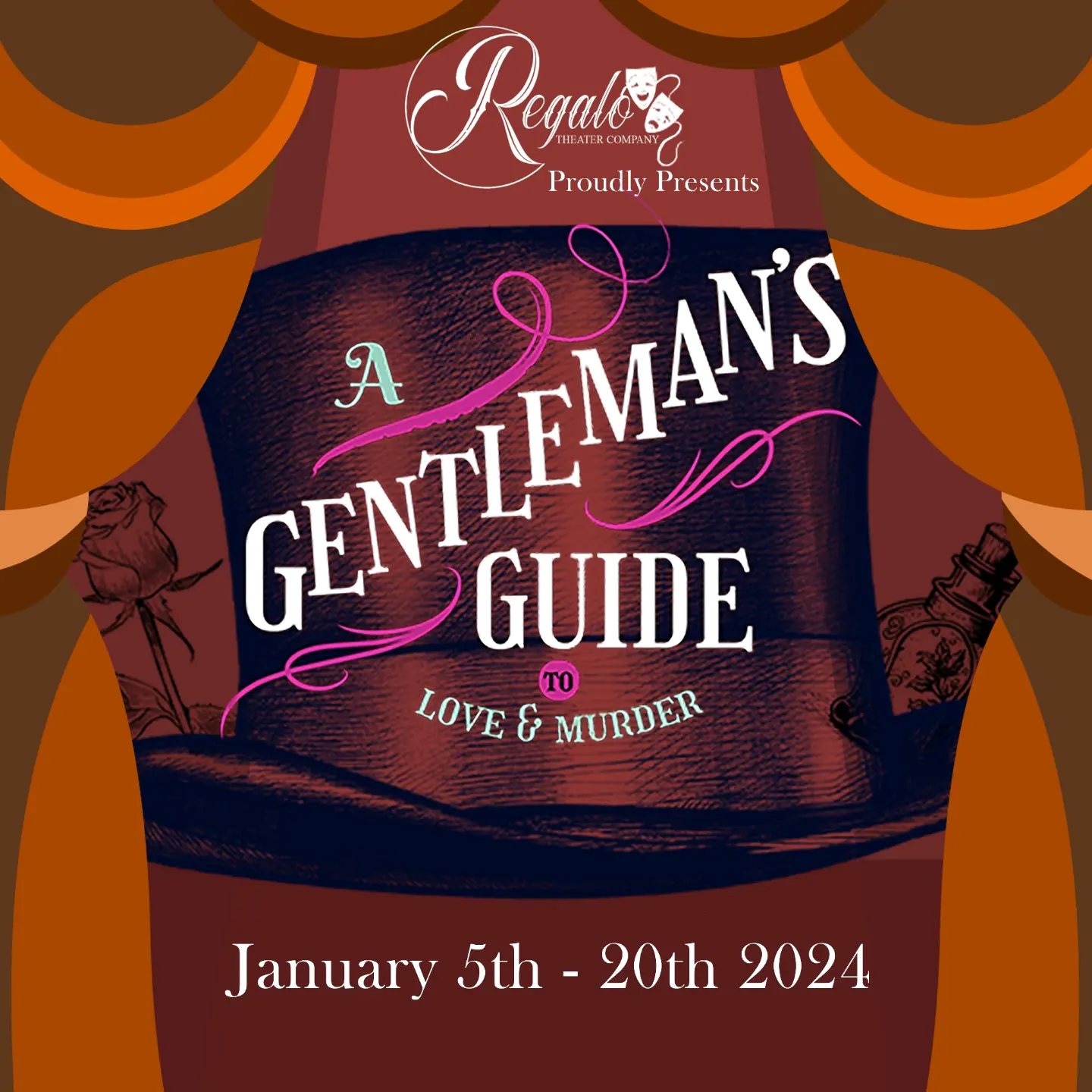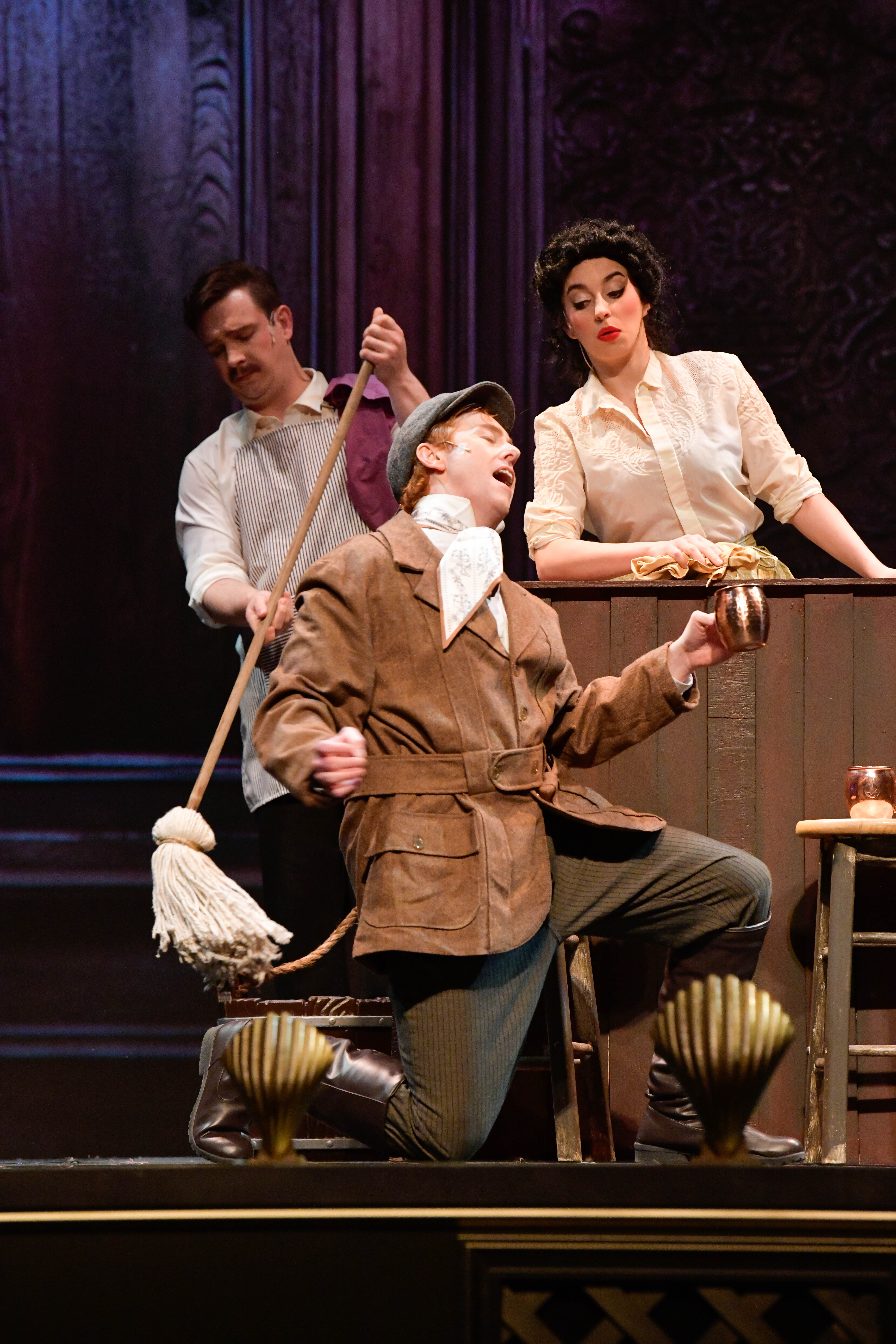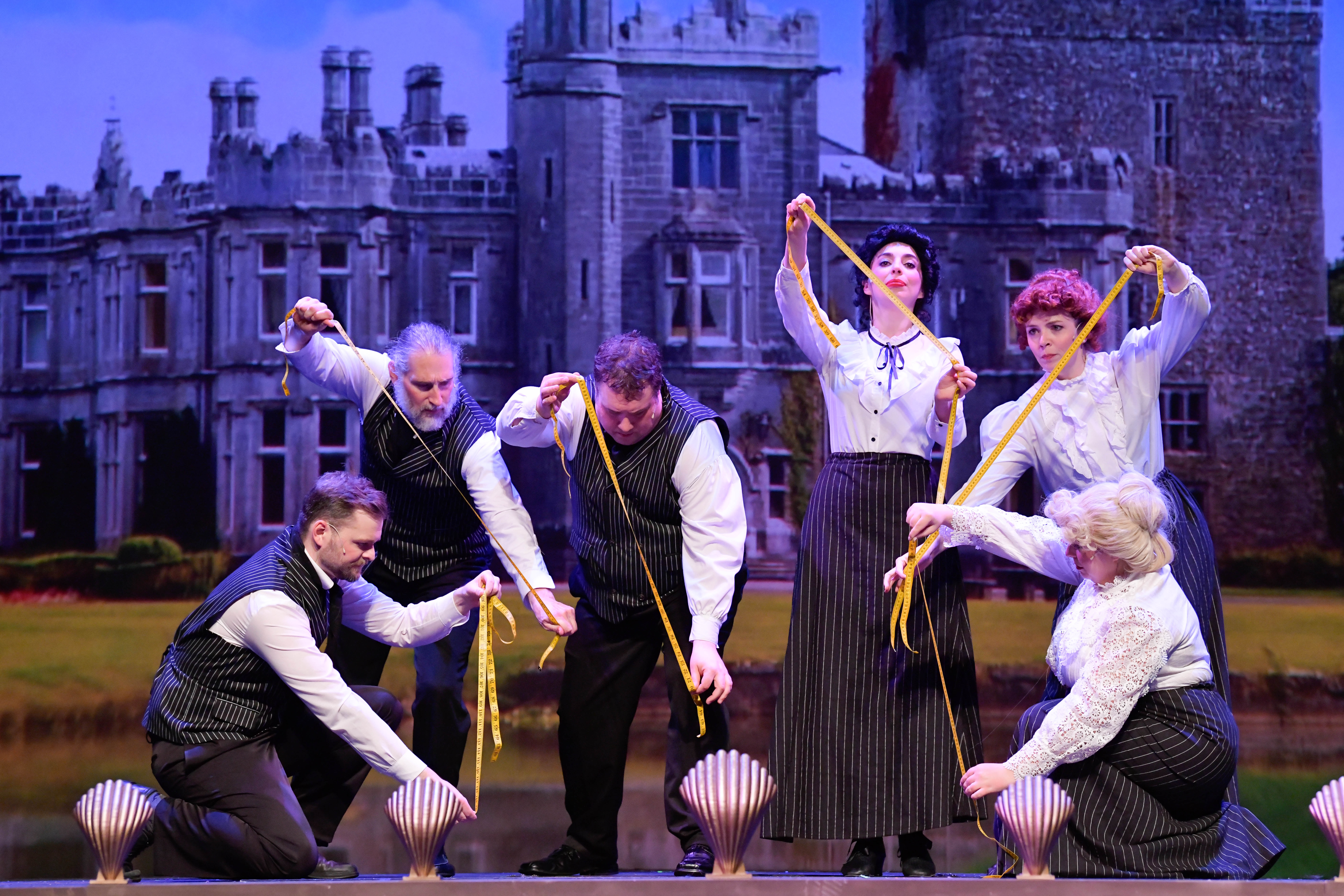LEHI — It is an understatement to say that the 2013 musical A Gentleman’s Guide to Love and Murder (from creators Steven Lutvak and Robert L. Freedman) killed it on Broadway. The show was nominated for ten Tony Awards (winning four) and a slew of other accolades during its three-year run on Broadway. A Gentleman’s Guide to Love and Murder follows the story of Monty Navarro, whose love life is doomed by poor financial prospects. In the play’s opening scene, Monty laments the death of his mother, but he is soon informed by a kindly old lady, Miss Shingle, that his deceased mother was disinherited from the wealthy D’Ysquith family and Monty ought to be in line to be a benefactor for the D’Ysquith fortune. When his petition is denied, he finds himself on a farcical adventure of pursuing the deaths (some intentional, and some inadvertent) of his relatives who could prevent him from being the next Earl. The show’s witty banter, energetic storytelling, and high stakes drama make it a great play. On Tuesday, January 11, I watched a mixed production which featured some great successes and a few failures that, like Monty’s relatives, were suffered sometimes due to misfortune and sometimes due to missed opportunities.

The strength of this production begins with Chris Last, who has the daunting task of playing all eight murdered members of the D’Ysquith family. They range from the frumpy aunt Lady Hyacinth, to the cockish trust fund son Asquith D’Ysquith, Jr. — and a host of others in between. Last’s cast bio cites an extensive improvisational background, and his dynamic range was on full display in the production. Each D’Ysquith had distinct vocal inflection, physical mannerisms, and were unique their own gait. It would be easy to forgive an actor for having some redundancy between the parts, but Last managed to bring a complete person to each D’Ysquith caricature in the story. I loved seeing him as the unassuming janitor at the end of the play as much as I was endeared to him as the benevolent Lord Asquith D’Ysquith Senior, who takes in Monty despite his family’s worst intentions. Each character and song brought new zest, and Last’s ability to make quick changes that dropped him entirely out of and into characters was astounding. He alone was worth the price of admission to the show and I would see him again and again on Utah stages.
I was initially assigned to review this production on Friday, January 5, but about ten minutes before curtain, the audience was informed that Jake Hart had taken ill, and that night’s performance would instead be a dress rehearsal with of Evan Meigs in the role of Monty Navarro. No one is to blame for a lead performer’s illness, and Regalo was in a difficult situation. My major concern about the change has little to do with Miegs and more to do with Regalo waiting until ten minutes to curtain to let audience members know. In the social media age, it felt like this could have been told to patrons sooner to provide the best experience possible.

On Tuesday, with script in hand for much of the show, Meigs gave a solid effort. Several of the most physical numbers were highly enjoyable, such as “Better With a Man,” in which Henry D’Ysquith makes a flamboyant pass at Monty. Another strong song was “I’ve Decided to Marry You,” where Monty bounces between his torrid affair with childhood love Sibella (played by Joy Austin) and new flame, the distant cousin Phoebe D’Ysquith (played by Brittni Smith). These numbers were physical romps that clearly got priority rehearsal time in helping Meigs perform the role. The downside is that while much of the blocking in these scenes was clean, the chemistry did not land. Meigs was not at fault for this; it is a massively complicated role to step into. However, some timing was delayed by dropped lines, uncertainty of character, and a general lack of chemistry between the performers. The upshot is that Hart is slated to return for the rest of the run and should elevate the remaining portion of the run.
At times, I wondered about the directing from Michael Carrasco as well. Some of the stilted chemistry felt like simple restraint in treating the adult humor in the play. “Better With a Man” is full of homoerotic innuendo, and it was intensely downplayed. Monty is intended to be aloof to Henry coming onto him in the number; only Last’s portrayal of Henry was incredibly tame. Similarly, the passion between Meigs and Austin was playful, as all kisses were made fanciful through lighting effects and blocking that looked right out of a Mickey Mouse cartoon. But I never got the sense that Monty was passionate about this childhood idol whom he is romantically involved with days after her honeymoon. In a show centered on themes of murder for money and humorously perverse infidelity, the choice to downplay the farce was a major missed opportunity.

Technically, Gentleman’s Guide was spectacular. Costumes (designed by Brooke Holahan) were a huge success, and the quick changes and lovely designs were impressive. The ensemble in particular were beautiful in a range of funeral blacks, painted caricature outfits from their busts and paintings, and servants in the household. The lighting (designed by Elizabeth Griffiths) was never a distraction and was often used to great effect in drawing the audience’s attention to key spots on stage during chaotic moments such as the confessions of Sibella and Phoebe during the song “That Horrible Woman.” My only complaint regarding technical elements was that the sound mixing was not good. Gentleman’s Guide thrives on the crisp articulation of quick hitting jokes in the midst of fast songs and dialogue. The music was overpowering the actors the entire show, and while stronger articulation from the performers might have helped, they also may have just needed to adjust the sound mixing.
Overall, Regalo Theater Company’s A Gentleman’s Guide to Love and Murder was a strong effort to mount a difficult show under unfortunate circumstances. I am not totally convinced that the show plays very well in that space generally. I sat on the sixth row, and it still felt like the massive auditorium was swallowing the stage for this show. However, Last made a strong first impression, and the story is a hilarious romp. With Regalo’s strong performance in recent shows (such as Amadeus), I believe that having the cast back to full health will make the show a delight to behold. I am not slaughtering the show like Lady Solome D’Ysquith was slaughtered in her performance, and this critic still hopes for better things in the future.
[box]A Gentleman’s Guide to Love and Murder plays nightly (except Wednesdays, Sundays, and January 13) at 7:30 PM through January 20, with an additional matinee at 2 PM on January 20, at Skyridge High School (3000 North Center Street, Lehi). Tickets are $10-15. For more information, visit regalotheater.com.[/box]
